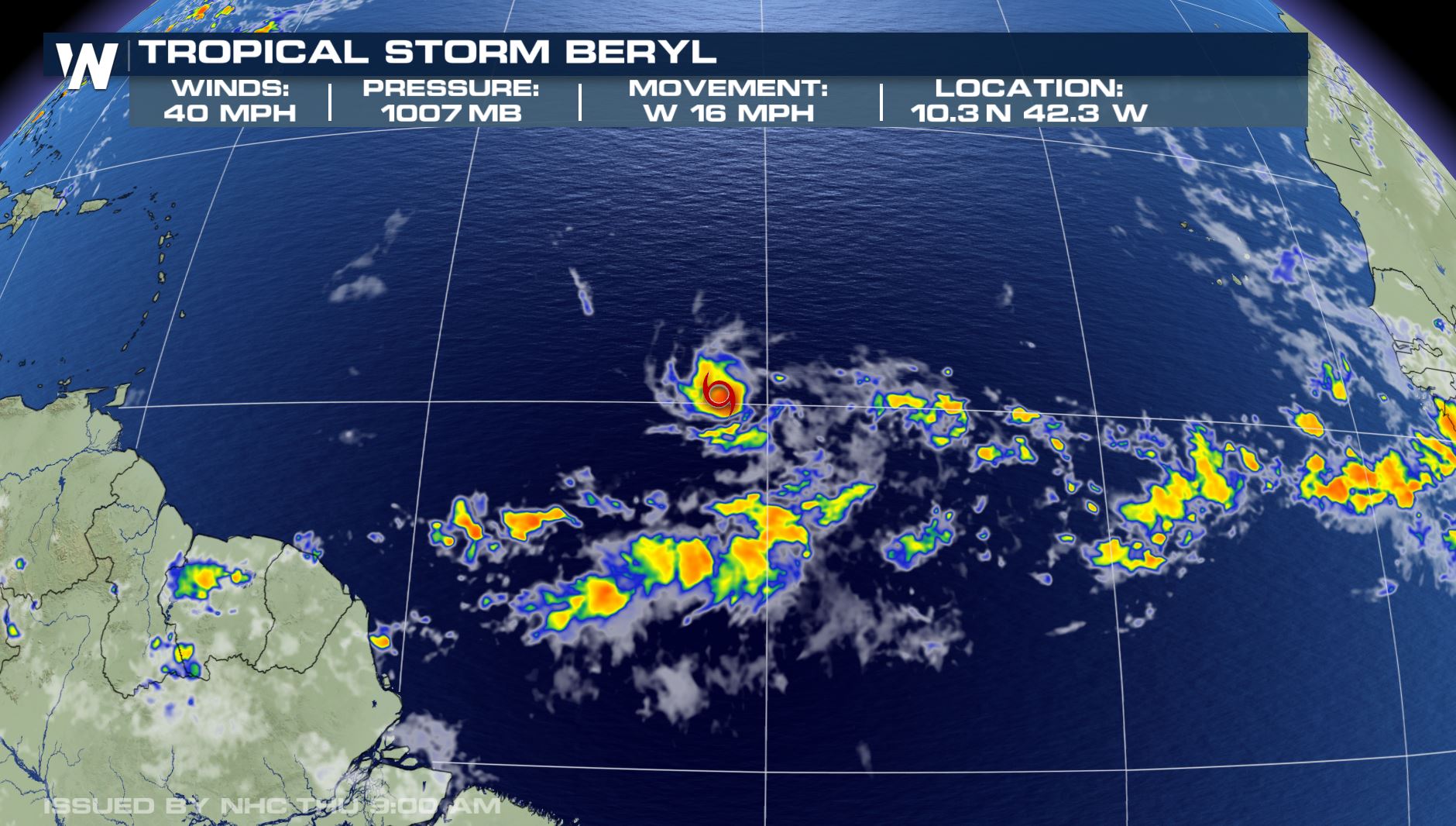Hurricane Beryl’s Formation and Movement

Hurricane Beryl emerged from a tropical wave that traversed the tropical Atlantic Ocean. Favorable atmospheric conditions, including warm ocean temperatures, low wind shear, and abundant moisture, provided an environment conducive to the wave’s development.
Atmospheric Conditions for Formation
The tropical wave encountered a region of the Atlantic Ocean with exceptionally warm sea surface temperatures, exceeding 26.5 degrees Celsius. This warm water provided the necessary energy for the wave to organize and intensify.
Moreover, low wind shear, or minimal changes in wind speed and direction with height, allowed the wave’s convection to develop vertically. This vertical development led to the formation of a low-pressure system, around which the hurricane’s circulation would eventually form.
Finally, ample moisture in the atmosphere contributed to the wave’s growth. As the wave moved over the warm ocean, it absorbed moisture, which released energy through condensation and fueled the storm’s development.
Timeline of Path and Trajectory
On July 5th, the tropical wave was designated as Potential Tropical Cyclone Two. By July 6th, it had strengthened into Tropical Depression Two, and by July 7th, it had become Tropical Storm Beryl.
Beryl’s initial movement was westward, steered by the prevailing easterly trade winds. As it approached the Lesser Antilles, it turned northwestward, likely influenced by an approaching mid-latitude trough.
The hurricane is projected to continue its northwestward track, passing near or over the northern Leeward Islands and Puerto Rico. Its ultimate trajectory and intensity will depend on factors such as the interaction with landmasses, changes in atmospheric conditions, and the availability of warm ocean waters.
Potential Impacts of Hurricane Beryl

Hurricane beryl prediction – Hurricane Beryl is expected to bring significant impacts to coastal communities. The storm’s high winds, storm surge, and flooding pose a serious threat to life and property.
Areas likely to experience the most severe impacts include the coastlines of Belize, Guatemala, and Mexico. These areas are expected to experience hurricane-force winds, storm surge of up to 10 feet, and heavy rainfall leading to flash flooding.
Evacuation Routes and Emergency Preparedness
Residents in affected areas are urged to evacuate to higher ground and follow the instructions of local authorities. Evacuation routes and shelters have been established, and residents should familiarize themselves with these plans.
In addition to evacuation, residents should also take steps to prepare for the storm, such as securing loose objects, stocking up on food and water, and having a plan for communication in case of power outages.
Mitigation and Response Strategies: Hurricane Beryl Prediction

Hurricane Beryl’s potential impacts are significant, requiring comprehensive mitigation and response strategies to minimize damage and ensure public safety.
Mitigation measures aim to reduce the vulnerability of communities and infrastructure to hurricane hazards, while response strategies focus on immediate actions to protect lives and property during and after the storm.
Mitigation Strategies, Hurricane beryl prediction
- Coastal protection structures: Seawalls, breakwaters, and levees can help shield coastal areas from storm surges and flooding.
- Building codes: Enforcing strict building codes for new construction and renovations can ensure structures can withstand hurricane-force winds and flooding.
- Land-use planning: Restricting development in high-risk areas and promoting green infrastructure can reduce the impact of hurricanes on communities.
Response Strategies
Hurricane response involves a coordinated effort from various agencies and organizations, each with specific roles and responsibilities.
| Agency | Roles and Responsibilities |
|---|---|
| National Hurricane Center (NHC) | Monitors and forecasts hurricane activity, issues warnings and advisories |
| Federal Emergency Management Agency (FEMA) | Coordinates disaster relief and recovery efforts, provides financial assistance |
| State and Local Emergency Management Agencies | Implement emergency response plans, coordinate local resources |
| Law Enforcement | Maintain order, enforce evacuations, and assist with search and rescue operations |
| Public Health Agencies | Provide medical care, monitor for disease outbreaks, and ensure access to clean water and sanitation |
Best Practices for Staying Safe
- Evacuate when ordered: Follow official evacuation orders and seek shelter in a designated evacuation zone.
- Secure your property: Board up windows, secure loose objects, and bring outdoor furniture inside.
- Stock up on supplies: Have a supply of food, water, first-aid kits, and other essential items on hand.
- Stay informed: Monitor weather updates and listen to local authorities for instructions.
- Be prepared for power outages: Have a battery-powered radio and flashlights available.
Hurricane Beryl ah de big storm weh a guh pass near Barbados. Yuh better check out beryl barbados fuh mo info. Dis storm can cause serious damage, so make sure yuh stay safe and listen to de advice from de authorities.
Hurricane Beryl predictions indicate a potential impact on Barbados. For more information on hurricane preparedness and safety measures, visit barbados hurricane. Stay informed and take necessary precautions to ensure safety during Hurricane Beryl.